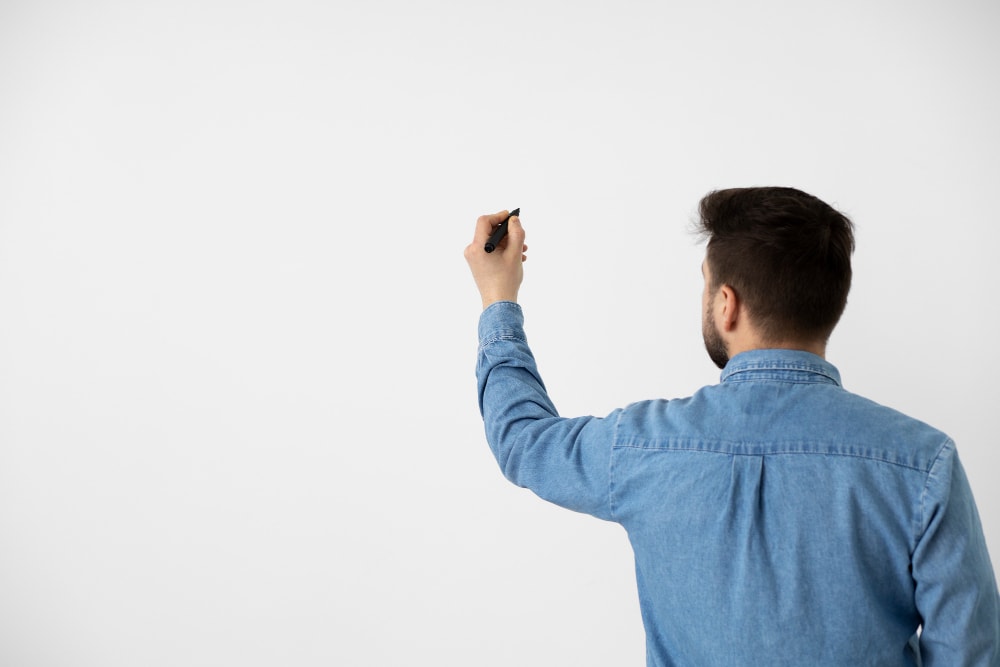Left Handers in a World Full of Right Handed People
In a world seemingly dominated by the right handed majority, here’s something you probably haven’t thought about in a while: left-handed people. Not exactly dinner table conversation, right? But once you start looking into it, it gets weirdly interesting.
There’s science, quirks, even some unfair stuff that lefties just have to deal with, all because most of the world was built for right-handed people.
Being part of the 10 percent
If you’ve got a left-handed sibling, child, officemate, or you’re part of that 10 percent, you know the difference. Daily life, from school desks to scissors, isn’t exactly leftie-friendly.
But the way left-handers navigate that says a lot. It’s one of those small traits that quietly shape how someone moves through the world, and once you notice it, you start to see things a little differently.
Left-handers: A Minority That Moves Differently
Some studies have found that left handers are only about 1 in 10 people. That’s not a lot, which is why they often stand out, especially in classrooms, offices, or even around the dinner table, where they’re always bumping elbows.
Left handed people adjust and develop mental flexibility
But despite being in the minority, left-handers have this quiet way of adjusting. They learn how to use tools, gadgets, and spaces that weren’t designed for them, and in the process, develop a kind of mental flexibility that sticks.
In a right-handed world, it’s easy to overlook how many things cater to the majority. Scissors, desks, mugs, and even written instructions are usually made with right-handers in mind.
Left handers are natural problem solvers
That constant need to adapt turns left-handed individuals into natural problem-solvers, often without even realizing it.
Compared to their right handed peers, left handed people will twice as likely, develop subtle workarounds that influence how they think and move.
What Left-Handedness Says About Your Brain Structure
Interesting facts about left handed people
There’s something fascinating going on beneath the surface. Most right-handed people rely heavily on the left hemisphere of the brain, especially for language and fine motor tasks.
Left-handers, however, tend to have a more balanced use of both hemispheres.
Breaking the myth: Right hemisphere for left handed people
In fact, research suggests that the right hemisphere plays a more active role in processing for many naturally left handed individuals, particularly in areas involving emotion, spatial reasoning, and music, as opposed to popular belief that left handers brains predominantly use the left side of their brains, therefore showing more divergent thinking.
Studies have shown that left-handed individuals often have a larger corpus callosum—the part of the brain that connects the left and right sides.
Both hemispheres of the brain communicating well for left handed people
This could mean stronger communication between the two hemispheres and a greater ability to multitask or process information in unique ways.
It’s not about being smarter. It’s about how information flows differently, opening up different paths for learning, memory, and creativity. Human handedness, it turns out, reveals just how varied our brains really are.
Image source: https://signaturehealthcare.org/periodic-limb-movement-disorder/
A Quick Look at Health: Periodic Limb Movement and the Left-Handed Brain
Aside from brain wiring and personality quirks, there are a few medical studies that link left-handedness to certain health patterns.
Periodic Limb Movement Disorder (PLMD)
One of the lesser-known ones involves Periodic Limb Movement Disorder, a sleep condition where a person’s arms or legs move involuntarily at night.
Researchers have found that left-handed participants with PLMD tend to move both sides of their bodies more often than right-handers.
It’s an interesting observation, but it doesn’t mean being left-handed causes sleep problems. In most cases, the condition is mild or goes unnoticed, and it can happen to anyone, regardless of their dominant hand.
What this really shows is how connected everything is—our brains, our bodies, even how we sleep. Left-handedness, it turns out, can offer small clues about how differently our systems are wired.
It’s not something to worry about, but definitely one of those surprising things science is still trying to understand.
Your Dominant Hand Is Chosen Early, but It’s Not Everything
Handedness usually develops early in childhood. Most people settle into being right-handed without thinking about it.
But for left-handed children, it’s a little more noticeable, especially when they’re constantly reaching for tools or toys that don’t quite fit.
Among the general population, there are also people who are mixed handed—those who use different hands for different tasks—which shows how flexible human handedness can be.
Still, being left-handed doesn’t define who someone is. It’s simply one trait among many, like being a morning person or having a great sense of direction.
But it does influence how people interact with their environment, and that influence can shape habits, thought processes, and even career paths.
Left-handed individuals often become highly adaptable thinkers not because they chose to be, but because they had to be.
Famous Left-Handers Who Made an Impact in a Right-Handed World
When you think of someone who’s left-handed, what comes to mind? For most of us, it’s just a fun fact like being able to write with your left hand or having a unique way of holding utensils.
But for some of the world’s most influential figures, being left-handed is just one part of a story that includes leadership, innovation, and creativity.
Image source: https://www.ft.com/content/46775bac-bb62-11e8-8dfd-2f1cbc7ee27c
Barack Obama is a left-hander. So is Oprah Winfrey. These are people who’ve shaped conversations and broken barriers not because of their handedness, but in spite of the world being designed for their right-handed counterparts.
Even in sports, left-handers have a reputation for being unpredictable and hard to defend. Manny Pacquiao built a legendary boxing career fighting southpaw, which gave him an edge against right-handed opponents.
(Photo by Tim Warner/Getty Images) https://spacecityscoop.com/2019/10/02/houston-rockets-james-harden-one-legged-shot/
Left handed athletes like Rafael Nadal and Martina Navratilova have also used their unique positioning to gain a tactical advantage in competition.
Image source: https://www.1st-art-gallery.com/article/uncovering-the-genius-of-leonardo-da-vinci/
History tells a similar story. Leonardo da Vinci, one of the most brilliant minds of all time, was left-handed.
So were Marie Curie, a pioneer in science, and Nikola Tesla, whose inventions shaped the modern world. Their left-handedness may not have been the reason for their genius, but it certainly didn’t stop them from becoming legends.
There’s something powerful about seeing people succeed by embracing what makes them different. It reminds us that our quirks, like being left-handed, can be a source of pride, not something to work around, but something to work with.
International Left-Handed Day: Yes, That’s a Thing
Every August 13, International Left-Handers Day gives space for a simple but meaningful idea: recognizing that not everyone moves through the world the same way.
It’s a lighthearted celebration, but it also brings attention to the fact that many everyday items, from notebooks to kitchen tools, aren’t designed for left-handed use.
It’s a chance to flip perspectives, even briefly. Trying to write with your non-dominant hand or use a reversed mouse setup for just a few minutes can quickly show what left-handed people experience regularly.
When you understand what someone else has to work around every day, you naturally show more patience, respect, and support. And that applies far beyond handedness.
Today, more brands are also offering left handed products, from scissors and kitchenware to ergonomic pens, which makes it easier for left handed kids and adults to live and learn without compromise.
Image source: https://www.familycorner.co.uk/it-problem-if-my-child-left-handed
Left-Handed Children and Why Support Matters
In many Filipino households, there’s still that lingering idea that using your left hand, especially for writing or eating, should be corrected.
But modern parenting and education now lean into acceptance. For left-handed children, being supported early helps them feel seen and valued, instead of singled out for being different.
Studies show that forcing children to switch to their right hand can cause stress, disrupt motor development, and slow down learning.
On the other hand, letting them grow into their natural strengths gives them the confidence to explore and express themselves freely.
Whether it’s choosing the right school supplies, adjusting table settings, or simply encouraging their progress, the smallest gestures can make a big difference.
For OFW parents, especially those watching from afar while raising children through video calls and balikbayan boxes, it’s a reminder that support doesn’t always have to be grand.
Image source: https://www.montmarte.com/blogs/tips-techniques/7-tips-for-left-handed-calligraphy
Sometimes it’s in the details. Letting your child be exactly who they are, dominant hand and all, says more than words.
At first glance, being left-handed might seem like a small, random trait. But when you take the time to look closer, it tells a bigger story.
It’s about how someone adapts in a world that’s not exactly built for them. It’s about quiet resilience, unnoticed workarounds, and everyday choices that shape how people think and live.
It challenges how we design our spaces, how we teach, how we raise kids, and how we relate to each other. The more we understand it, the more we learn to appreciate the small differences that make people unique.
So, whether you’re left-handed, know someone who is, or just learned something new today, one thing is clear: the way someone uses their hands can say a lot about how they move through life, and that difference deserves to be noticed.












